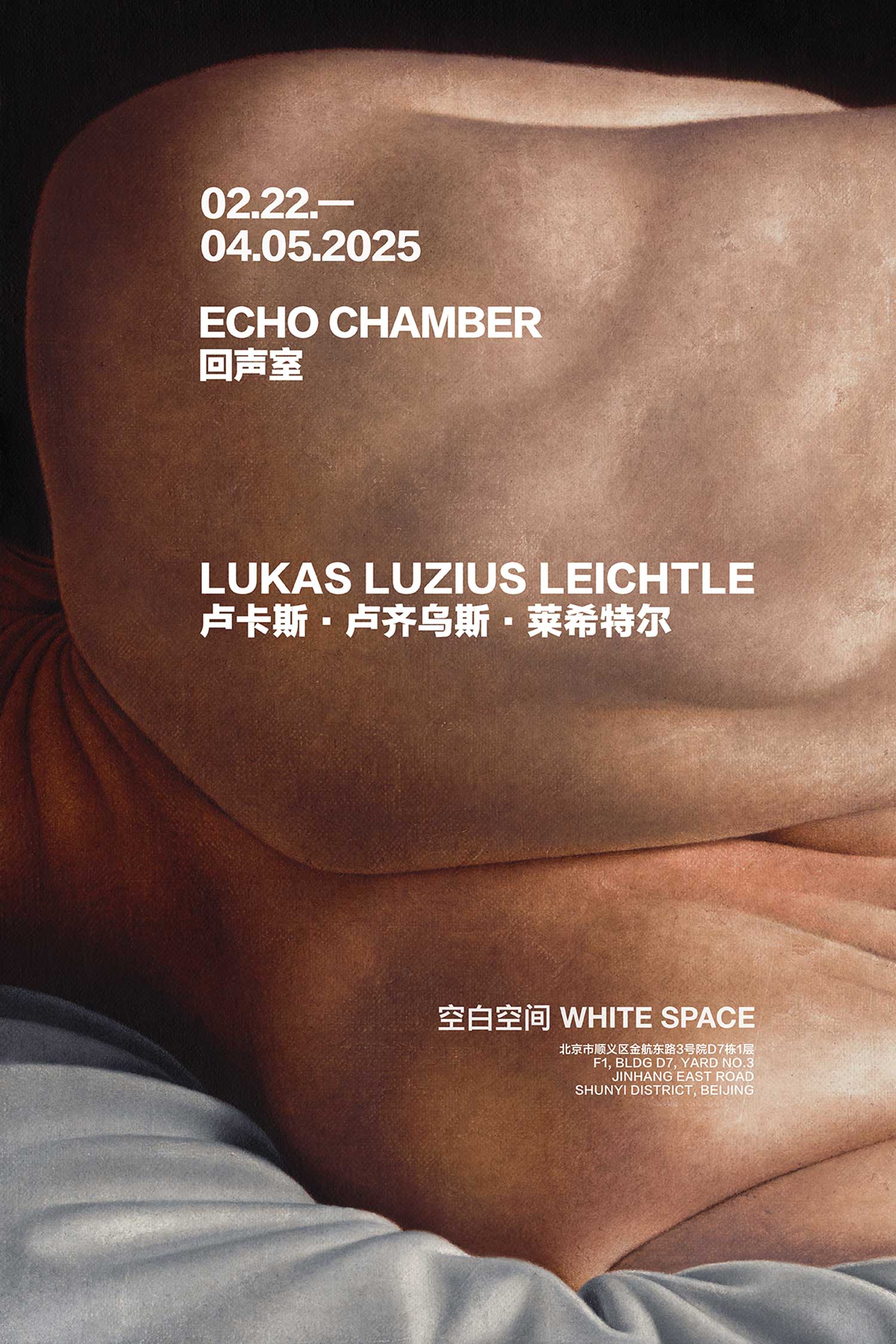WHITE SPACE is presentingEcho Chamber, Lukas Luzius Leichtle’s first solo exhibition at the gallery. Opening on February 22, 2025 and continuing through April 5, 2025, the exhibition will showcase the artist’s most recentworks.
As befits the title’s rich metaphorical connotations, the exhibition constructs an echo chamber of multiple intertextual series—each centered on themes of the body and the spatial intimacy of the bathroom—to create an open, exploratory realm: a labyrinth that navigates between the humanistic spirit of the Renaissance and the perceptual dilemmas of our contemporary age. In German, the word “Absicht” (intention) contains the root “Sicht” (sight), suggesting an etymologically intrinsic link between intent and visual experience. In the same vein, for Leichtle, painting is a discipline of observation. In mastering the characteristics of his medium while yielding to its material potentials, he orchestrates a collision at the threshold between the physical reality of his pigments and his own creative intent.
In his creative notes, Leichtle writes, “Wiping off the residue from my shower in the attempt of preempting the smell of dampness, which I fear. Observing the beading droplets struggling to find hold on the smooth surface of the tiled wall. Eventually the water avoided my rigorous wiping with the squeegee by sinking into the open texture of the tile joints.” His painting series Fuguesoccupies the center of the gallery space, drawing viewers into a meditative space shrouded in a haze of water vapor. Here, the geometric grid of bathroom tiles embodies a structural motif, yet their grout lines conceal deft epistemic innuendos—those very gaps, known as “Fugen” in German, act both as a visual translation of the contrapuntal interplay in Bach’s fugues and as secret scars or incisions that point to an undisclosed, intimate flesh. The painted steam and the vein-like entangled textures compose a quotidian archive of existence and introspection.
In contrast to paintings referencing the bathroom as a psychological chamber, works likeI know I saw because I don’t understand (After Jan Van Eyck’s Adam) engage in dialogues with canonical masterpieces such as theGhent Altarpiece andVenus Pudica. By activating the tension between the sacred and the secular, and concealment and revelation, these pieces interrogate the very concept of the human body, exposing its inherent illusoriness despite its seemingly concrete existence. To achieve this, Leichtle leverages the reflective quality of the raw oil priming white, treating it as a light source unto itself. Further enriching the surface, he employs sandpaper to abrade the primed canvas, creating a textured topography reminiscent of the etched traces left during the photographic developing process. The unexpected scratches and dents, initially born of a destructive act, are then repeatedly “polished” and refined by his hands. This laborious course of action mirrors the eternal struggle of contemporary humanity, as it is perpetually caught between the desire for fastidious control and the anxiety of impending chaos.
For this reason, light, too, operates as a dual metaphor. While the reflected glow emanating from the underlying paint layers mimics the radiance from the real world, this light, if intensified to the point of “overexposure”, can dissolve all discernible details. This effect alludes to the philosophical notion of “paradox of proximity”—when we zoom in to an extreme degree to scrutinize the pores of our skin, we gain nothing but a mere visual abstraction. This contemporary rendition of concealment and revelation reimagines the narrative of original sin depicted in theGhent Altarpiece. Lirchtle reframes this biblical fall from grace as a manifestation of identity anxiety induced by privacy infringement in the digital era. In a world where social media overexposes every facet of our lives, true intimacy retreats further and further into the hidden recesses of our consciousness.
Additionally, the texture of his paintings serves another purpose than this apparent return to Renaissance aesthetics. Beyond the immediate visual ruse, Leichtle seeks to evoke tactile memory through tangible physicality. He captures those peripheral moments when one’s hands explore the body or its appendages—a gesture as intimate and delicate as the artist’s brush touching the canvas. By pushing the representation of the body to an extreme, he restores the inherent materiality and weight of the flesh onto the painting’s traditionally two-dimensional surface. This sense of palpable force is particularly evident in works such asAn Annoyance Turned Sensitisation. The endeavor to translate bodily weight into a coherent compositional structure echoes a pivotal shift in the history of art. Just as Renaissance pioneers allowed gravity to anchor human figures, enabling them to “stand” upright on the ground with a newfound sense of realism and weight, Leichtle, through his superimposition of perspectival grids and corporeal projections, explores the re-landing of materiality in our increasingly virtual age.
This exhibition, ambitiously charged with both intellectual rigor and sensorial tension, stands much like a musical fugue—a melody of color, line, mechanism, perspective, and form that resonates throughout the Echo Chamber. Various voice channels command chase games of a series of dichotomous notions. We witness the push and pull between corporeality and materiality, control and chaos, and presence and absence. Ultimately, the exhibition brands a lasting spiritual stamp of our times onto the viewer’s retina.

